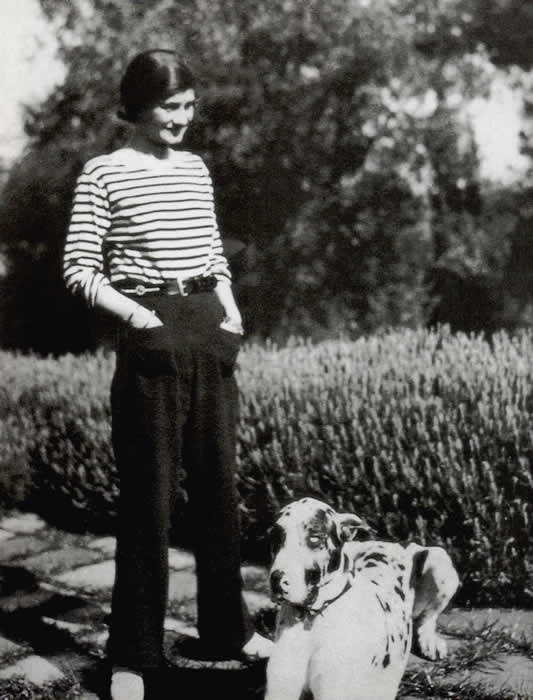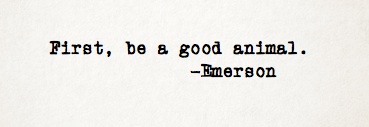 That’s a quote from Coco Chanel that I used last week to kick off a theater/social studies residency with eighth graders in Evanston. We’re exploring the 1920s and ‘30s through theater and creative writing. The first week we looked at changing images and roles for women in the 1920s; then, the students investigated their own relationship to fashion by writing about an article of clothing that was significant to them in some way. The quote sparked a discussion about clothing and culture and the connections between the two, both in the 1920s and today. (Also, 1920s slang is the bees’ knees.)
That’s a quote from Coco Chanel that I used last week to kick off a theater/social studies residency with eighth graders in Evanston. We’re exploring the 1920s and ‘30s through theater and creative writing. The first week we looked at changing images and roles for women in the 1920s; then, the students investigated their own relationship to fashion by writing about an article of clothing that was significant to them in some way. The quote sparked a discussion about clothing and culture and the connections between the two, both in the 1920s and today. (Also, 1920s slang is the bees’ knees.)
As an eighth grader myself, I was fond of quotations and tended to season my writing liberally with them—drawing from top 40 songs as well as my mother’s trusty Bartlett’s Familiar Quotations, which is apparently the longest-lived and most widely distributed collection of quotes there is. Its first publication was in 1855. (Side note: when I was in eighth grade, one couldn’t call a quotation a quote without risking the wrath of one’s English teacher. Quote was the verb, quotation the noun. Now, apparently one can although it’s considered informal usage.)
These days I feel like we’re inundated with pseudo-meaningful quotes photoshopped in every font imaginable onto pictures of sunsets or snowboarders. On coffee mugs. Reusable shopping bags. The internet is rife with sites devoted to cataloguing quotes on every subject under the sun. There’s even a primer on how to come up with a good quote of your own that offers up these helpful tips:
It is easier to create a funny quote than a thoughtful, serious one.
The possibilities are endless; it’s like writing a poem.
Try and be creative and jazz up your quote a little, that makes it a lot more interesting.
Be aware of plagiarism and copyright laws. Some quotes you think up may be already taken. (I hate when that happens.)
I still like coming across a good quote, though I’m wary of my eighth grade tendency to slap one on everything. (Which I think is akin to that old standby of hastily composed term papers and toasts—beginning with “Webster’s dictionary defines ‘insert topic’ as…”) A piece on The Millions on epigraphs cautions they can feel like throat clearing before one gets to the business at hand. Nonetheless, there’s a quote I really like as an epigraph for The Saltwater Twin and Other Mythical Creatures. It’s by Isak Dinesen:
Truth.
There’s a handful more quotes I’ve used as epigraphs for particular essays within the collection. I’m wrestling with whether it will feel lopsided for some essays to have epigraphs and others to stand alone. The advice on epigraphs seems to favor consistency. We’ll see what the agents think. (I’ve had two requests for the manuscript so far, but I know with the holidays fast approaching, it may be some time before I hear back.)
Apparently, I still like quotes. I was surprised when I looked through the manuscript at how many I’d included, not just as epigraphs, but in the body of the essays. They’re drawn from poems: T.S. Eliot, Emily Dickinson, Lucille Clifton; songs: The Talking Heads and Fleetwood Mac; historical figures: Prince Charles, Alice James; and fiction: Rudyard Kipling, Lewis Carroll, Herman Melville. And that’s just to name a few. It’s interesting to think about all the things that are rattling around in one’s brain. I thought I’d share some of the ones I used in The Saltwater Twin with you.
This one precedes “Orphans,” an essay about why I was so enamored with Annie and her ilk as a kid:
This one is in “Law of the Jungle,” which explores our relationship with animals and the dichotomy between predator and prey:
From “Only the Good,” which investigates shame:
From “Eve and Other Naked Ladies:”
 And in “Bad Pen Pal,” a meditation on friendship, I quote “Spring and Fall” by Gerard Manley Hopkins:
And in “Bad Pen Pal,” a meditation on friendship, I quote “Spring and Fall” by Gerard Manley Hopkins:
I love that poem!
How about you, dames and drugstore cowboys, you birds and palookas, you sheiks and shebas? (Still on the ‘20s slang.) Any favorite quotes? High school yearbook? Coffee mug? Kitty calendar? Share ’em in the comments.






My father was cremated instead of buried (he now resides under my mother’s bed).
Back in the day he would always say that his gravestone should read, “Yes, but…”
LikeLike
Love this post. Like you, I love quotes. I remember this quote from Jim Morrison that I included in my blurb in my high school yearbook: “There’s the known and the unknown, and what separates the two is the door.” I thought that was just about the deepest thing back in 1985.
As a grown-up, I collect quotes in a little brown journal. I have agonized over including epigraphs in my book. I put them in, pulled them out and put them in again. Some seem just right. Others forced. And I have worried about whether the pull the reader out of the story.
Here’s a favorite one: “It is not down in any map; true places never are.”
— Herman Melville, Moby Dick
LikeLike
My favorite quote is by my nephew Wesley when he was 3 (he is now nearing 30)…
“If you get lost, just draw in more of the map.” —Wesley Lomnicki
LikeLike
I am loving these quotes from dads and nephews and 19th century novelists!
LikeLike
I, too, love finding quotes to toss about in my writing. The fifteen-year-old narrator of my 2nd novel made liberal use of them. But here is one that I particularly like; it both moves me and tickles me:
one must still have chaos within oneself, to give birth to a dancing star.
–Nietzsche
LikeLike